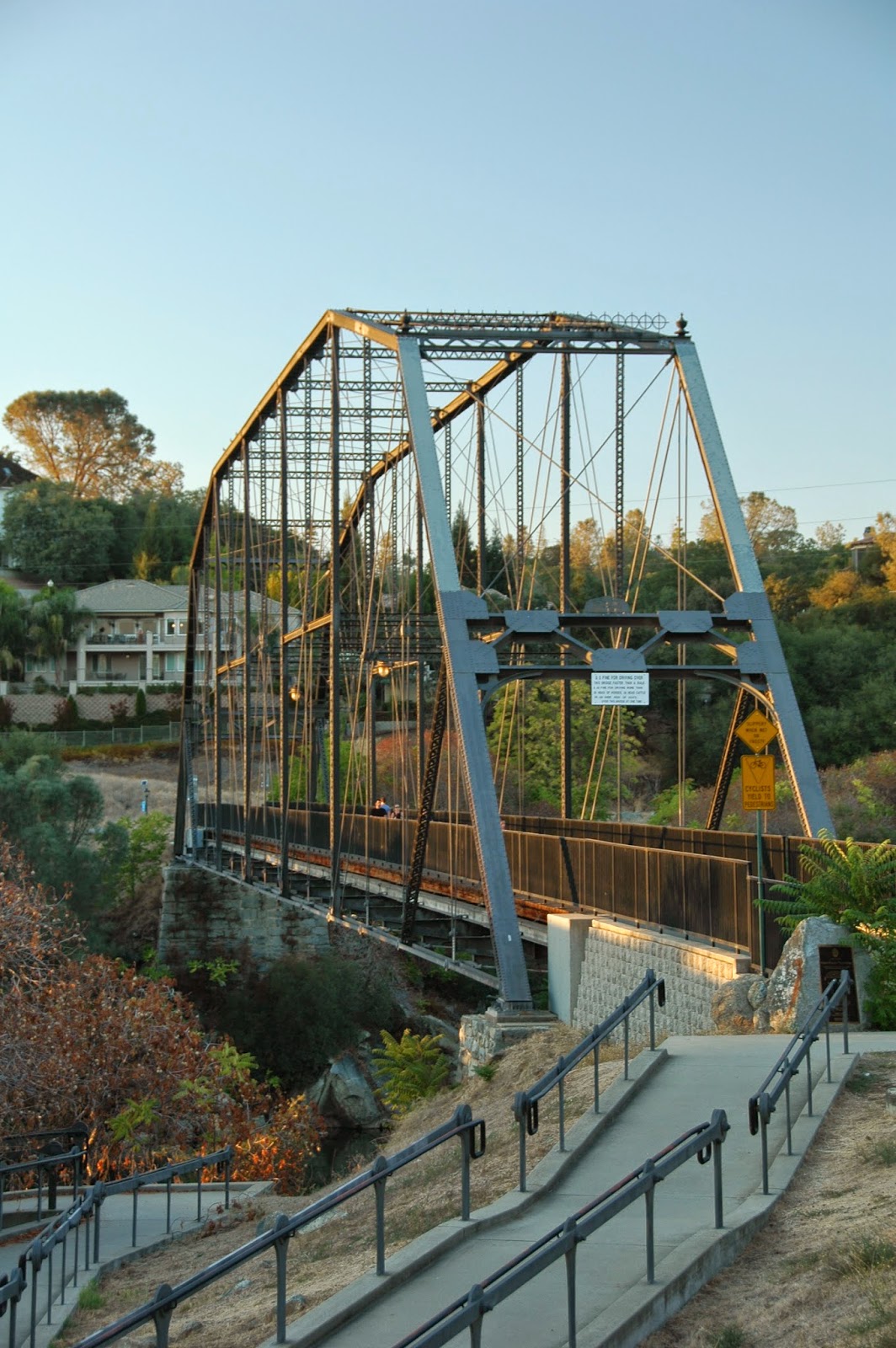 ISuisun City and my last
was the Laguna West subdivision
in Elk Grove, which is where the saga could have ended. But a few days later, I had a professional
meeting in Folsom, so will make that historic city the coda to my wintertime
urbanist travels.
ISuisun City and my last
was the Laguna West subdivision
in Elk Grove, which is where the saga could have ended. But a few days later, I had a professional
meeting in Folsom, so will make that historic city the coda to my wintertime
urbanist travels.
I spent my
high school years only a few miles from Folsom and retain fond memories of the
community. Looking around with older
eyes, I still see the historic and walkable downtown that appealed to me. But I can also see that the walkability
lessons weren’t applied as the town grew.
And grow it did, with an explosion of drivable suburbia continuing to
the present day.
The result
is that this historic district, which is primarily Sutter Street, now sits isolated,
a theme park surrounded by a sea of suburbia.
And that’s a
shame because Sutter Street has much to teach us. I’d prefer more residential within walking distance
of Sutter Street, but Sutter Street is a comfortable, walkable place.
Several
years ago, the city secured funds for a full historical restoration of Sutter
Street. The project triggered disputes
about the removal of elements, such as shed roofs over sidewalks, which had
been added over the years but weren’t consistent with the historical
character. In most cases, I’ll give the nod
to function over historical authenticity, but I think the Sutter Street vision worked
out fine.
In
particular, I’m impressed by the solution for commercial deliveries. Designated unloading spaces are provided on
alternating sides of the street. If all
the loading spaces are in use, motorists must traverse low-speed chicane along Sutter
Street, regularly yielding to opposing traffic.
Meanwhile, car parking is provided by insets behind the gutter line,
tucked between street trees. It’s a fine
solution and consistent with the multi-user nature of the street. And it precludes any need for a “Twenty is Plenty” standard.
Near the
west end of Sutter Street is the historical railyard area, with the turntable
still in place. It’s a nice bit of
history. But it's also where the
walkability of Sutter Street begins to break down. Adjoining the turntable, and set far back
from Sutter Street, is a structure that is predominantly parking garage.
On the far
end of the garage is the Historic Folsom Light Rail Station, which is a fine
element for a historic district. But it’s
removed from the historic district, separated by the garage, so lacks the interest
and usefulness that walkability needs. And
the 102 parking spaces allocated for the light rail passengers are a poor and
inadequate replacement for walkability.
The
residential areas that might feed the light rail station are little better, with
many of them missing sidewalks.
Overall,
Sutter Street is a lovely place, but it’s a reminder of how we lived more than
a century ago. Although the opportunity
was there, it fails to provide a template for how we might live in the
future. And that’s a disappointment.
 Before
closing, I should mention the Historic Truss Bridge, only a long block away
from Sutter Street. The bridge carries
the American River Bike Trail over the American River. The bridge was built in the 1880s, but was soon
made inadequate by the heavier vehicle weights allowed by internal combustion
engines. It was moved to Siskiyou County,
where it served weight-limited duty for nearly a century.
Before
closing, I should mention the Historic Truss Bridge, only a long block away
from Sutter Street. The bridge carries
the American River Bike Trail over the American River. The bridge was built in the 1880s, but was soon
made inadequate by the heavier vehicle weights allowed by internal combustion
engines. It was moved to Siskiyou County,
where it served weight-limited duty for nearly a century. In the 1990s,
the County decided that the bridge needed replacement and began making
demolition plans. At about the same
time, the City of Folsom needed a bridge to carry the bike trail across the
river. My late father, who spent much of
his post-retirement passion in the research of historical bridges, spotted the
opportunity, made the introductions, and then stepped back and watched as the
old bridge was returned to its original abutments. As a result, the bridge today carries a
second title as the Donald W. Alden Memorial Bridge.
In the 1990s,
the County decided that the bridge needed replacement and began making
demolition plans. At about the same
time, the City of Folsom needed a bridge to carry the bike trail across the
river. My late father, who spent much of
his post-retirement passion in the research of historical bridges, spotted the
opportunity, made the introductions, and then stepped back and watched as the
old bridge was returned to its original abutments. As a result, the bridge today carries a
second title as the Donald W. Alden Memorial Bridge.
Dad was more
of a bridge guy, but understood my passion for urbanism. I suspect he’d share my wish that Folsom
could have more of a functioning, walkable downtown, not a historical theme
park.
As always,
your questions or comments will be appreciated.
Please comment below or email me.
And thanks for reading. - Dave Alden (davealden53@comcast.net)



No comments:
Post a Comment